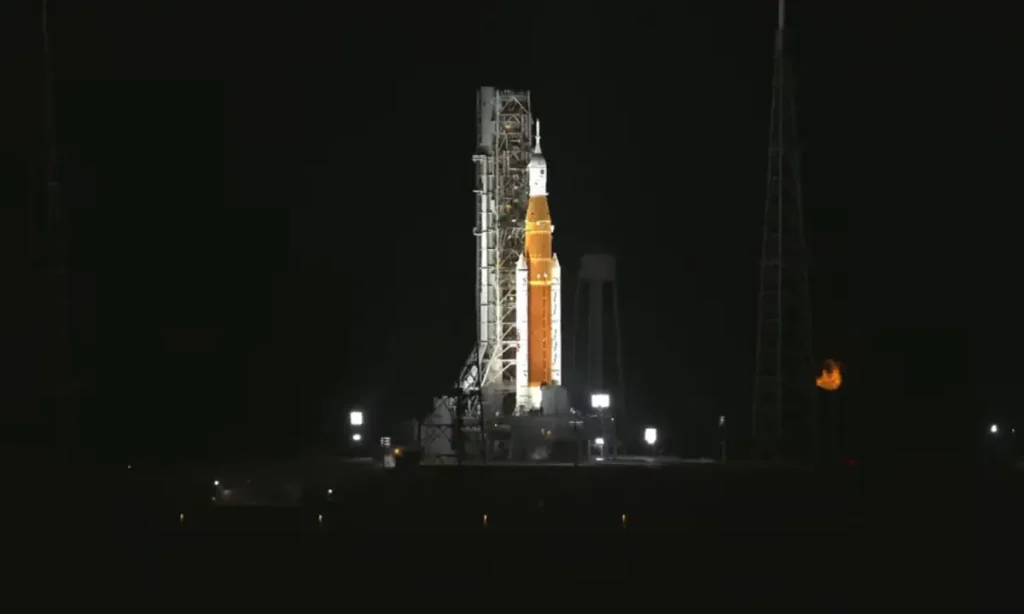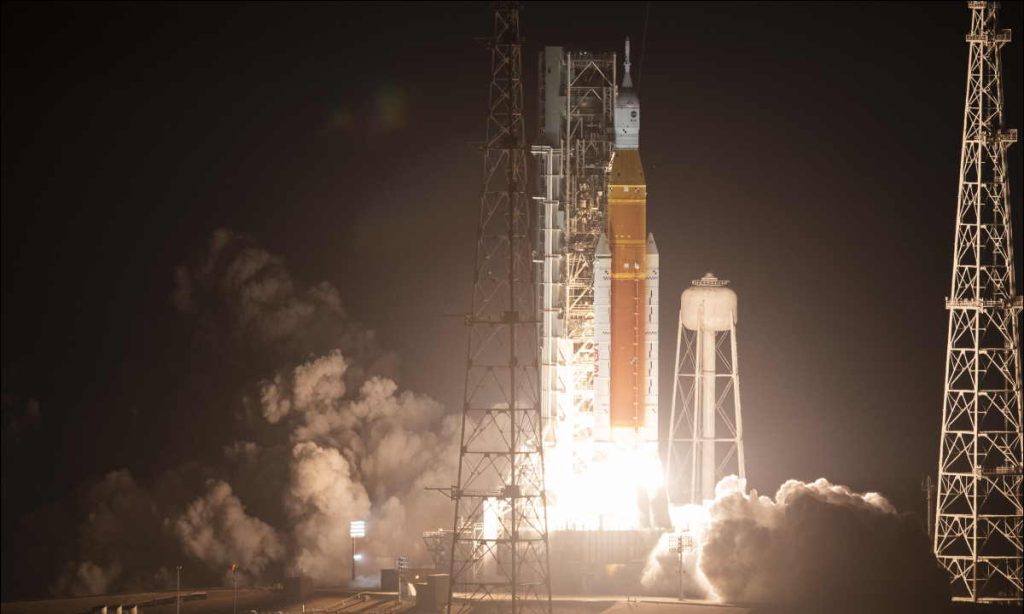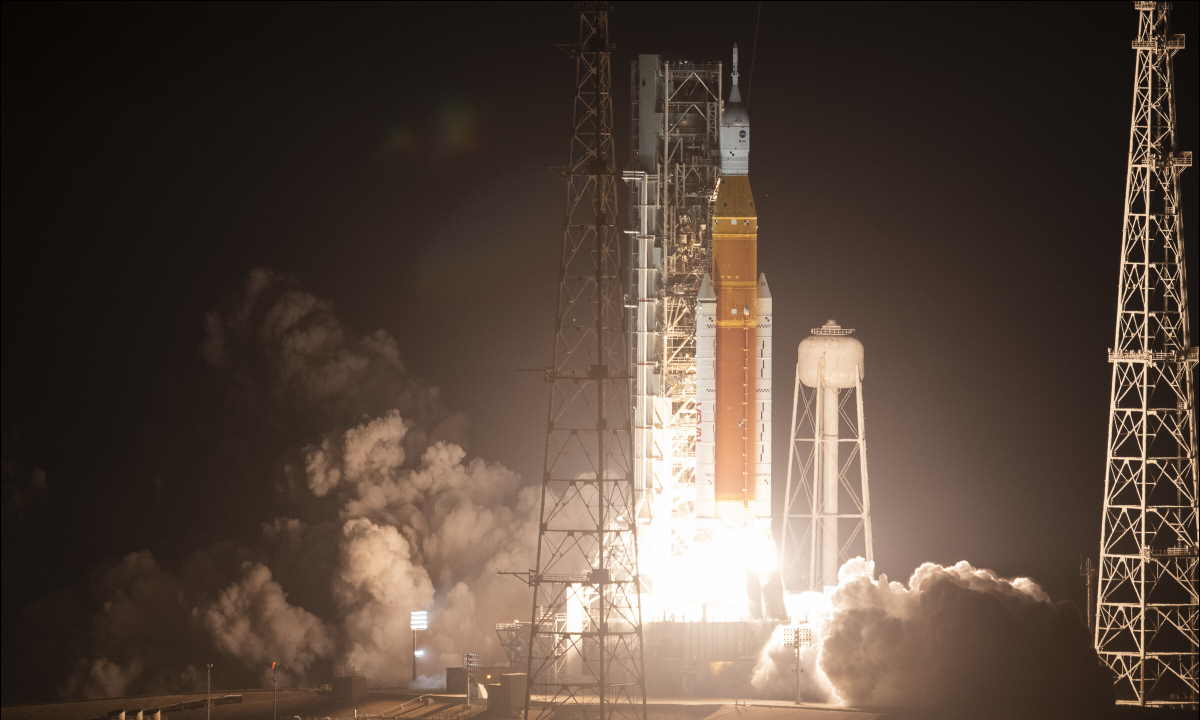On November 16, 2022, Wednesday, NASA finally launched its next moon rocket: Artemis I, NASA’s Space Launch System (SLS) rocket, carrying the uncrewed Orion spacecraft lifted off from Launch Complex 39B in Florida at 1:47 a.m. EST.
Through Artemis missions, NASA is planning to land the first woman and the first person of color on the Moon, paving the way for a long-term lunar presence and serving as a stepping stone to send astronauts to Mars.
Artemis I
According to NASA, The primary goal of Artemis I is to thoroughly test the integrated systems before crewed missions by operating the spacecraft in a deep space environment, testing Orion’s heat shield, and recovering the crew module after reentry, descent, and splashdown.
The uncrewed Orion spacecraft will go on a six-week mission around the Moon and back to Earth.

The launch was successful. Below are the ascent milestones that occurred over the next two hours.
- Solid rocket booster separation (Mission Elapsed Time 00:02:12). The Space Launch System’s (SLS) solid rocket boosters have successfully jettisoned. The SLS core stage continued to fire until 8 minutes after launch. The service module fairing and the launch abort system separated from the Orion spacecraft in about one minute.
- Service module fairing jettison (MET 00:03:11). The service module fairing and launch abort system have successfully separated from the Orion spacecraft.
- Launch abort system jettison (MET 00:03:16)
- Core stage main engine cutoff commanded (MET 00:08:03)
- Core stage/ICPS separation (MET 00:08:15). Space Launch System core stage main engine cutoff is complete, and the core stage has separated from the interim cryogenic propulsion stage and Orion spacecraft. The next milestone is the deployment of Orion’s solar arrays, scheduled to begin approximately 18 minutes after launch.
- Orion solar array deployment completed (MET 00:18:09). Orion’s solar arrays have completed their deployment. The solar arrays are drawing power, and early data suggests good performance. The next milestone will be a perigee raise maneuver at approximately 2:41 a.m. EST to raise Orion’s orbit in preparation for the critical trans-lunar injection that will send Orion to the Moon. Perigee is the point in the orbit of any object at which it is nearest to the earth.
- Perigee raise maneuver completed (MET 00:52:56). The perigee raise maneuver has been successfully completed. The interim cryogenic propulsion stage fired for just over 20 seconds to raise the lowest point of Orion’s Earth orbit in preparation for the critical trans-lunar injection burn that will send Orion to the Moon. The trans-lunar injection burn is currently targeted for about 3:14 a.m. EST and will last approximately 18 minutes.
- Orion spacecraft is on Its Way to the Moon. The interim cryogenic propulsion stage (ICPS) completed its approximately 18-minute trans-lunar injection (TLI) burn and the spacecraft separated from the stage. Orion fired its auxiliary thrusters to move a safe distance away from the expended stage and the spacecraft is on its way to the Moon. The propulsive maneuver accelerated the Orion spacecraft to more than 22,600 mph (36,370 kph) and propelled it on its path to the Moon.

Video: NASA Launches Artemis I Moon Rocket
Sources
- “Artemis” on the NASA website
- Moon Landings: All-Time List [1966-2025] - February 2, 2025
- What Is Max-Q and Why Is It Important During Rocket Launches? - January 16, 2025
- Top 10 Tallest Rockets Ever Launched [2025 Update] - January 16, 2025
